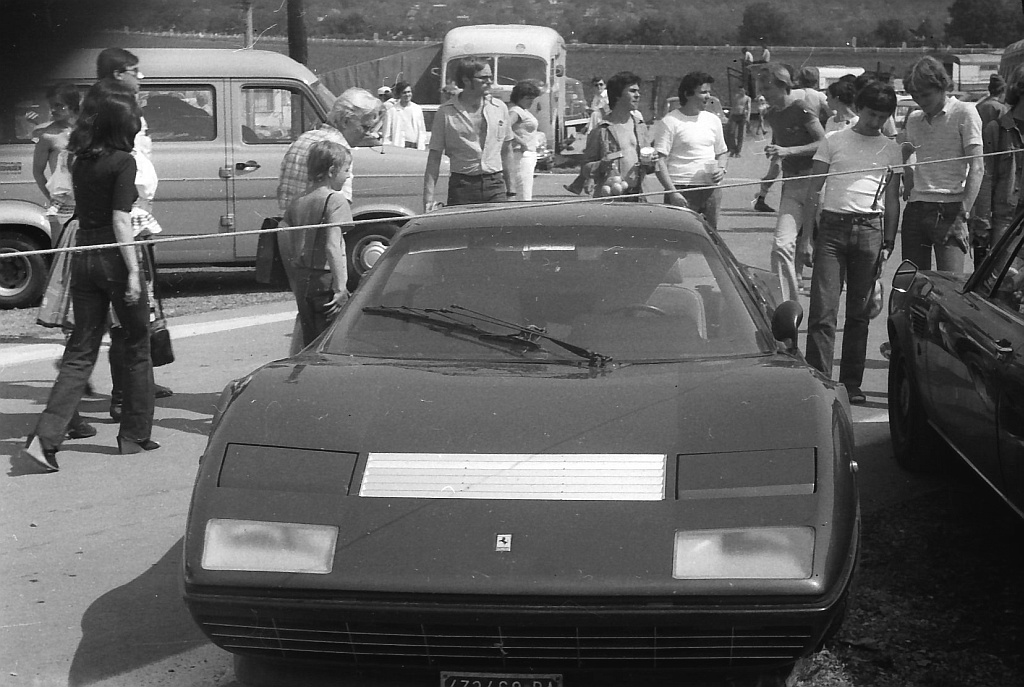Description
The Ferrari 512 BB, introduced in 1976 as the successor to the 365 GT4 BB, represented the evolution of Ferrari’s first mid-engined 12-cylinder road car. While it retained the same basic concept and design philosophy, the 512 BB featured a larger engine, revised styling, and a number of mechanical refinements that made it a more mature and capable grand tourer.
At its core was a 4,943 cc flat-12 engine, enlarged from the 4.4 litres of the 365 GT4 BB. This unit produced around 360 horsepower at 6,200 rpm and was fed by four triple-choke Weber carburettors. Despite a slight reduction in peak horsepower compared to the earlier model, the 512 BB delivered more torque and a broader powerband, which improved drivability and long-distance touring performance. The car could reach 0–100 km/h in approximately 5.4 seconds and had a top speed of about 283 km/h, keeping it among the elite supercars of its time.
Stylistically, the 512 BB continued with Pininfarina’s wedge-shaped design but introduced subtle changes that distinguished it from its predecessor. Most notably, it featured twin rear taillights and twin exhaust outlets on each side, instead of the triple arrangement on the 365 GT4 BB. The front air intake was reshaped, and the rear track was widened, giving the car a more aggressive stance. The lower body typically remained finished in black, a hallmark of the Berlinetta Boxer line.
Mechanically, the 512 BB was refined with improved suspension geometry, ventilated disc brakes, and better weight distribution, thanks to changes in the rear chassis layout. These updates gave it greater stability and handling precision, making it more usable on the road compared to the rawer 365 GT4 BB.
The interior was trimmed in typical Ferrari fashion, with leather seats and a driver-focused cockpit. While not luxurious by modern standards, it offered a blend of sportiness and comfort suitable for long, high-speed journeys.
Ferrari produced 929 examples of the 512 BB between 1976 and 1981, before replacing it with the fuel-injected 512 BBi. Today, the 512 BB occupies a significant place in Ferrari’s history as a car that solidified the brand’s commitment to mid-engined flagship models, while also balancing performance with practicality. Collectors value it for its blend of rarity, design purity, and the visceral character of its carbureted flat-12 engine.
Would you like me to also expand on how the 512 BB compared with its successor, the 512 BBi, particularly regarding performance and collectibility?
